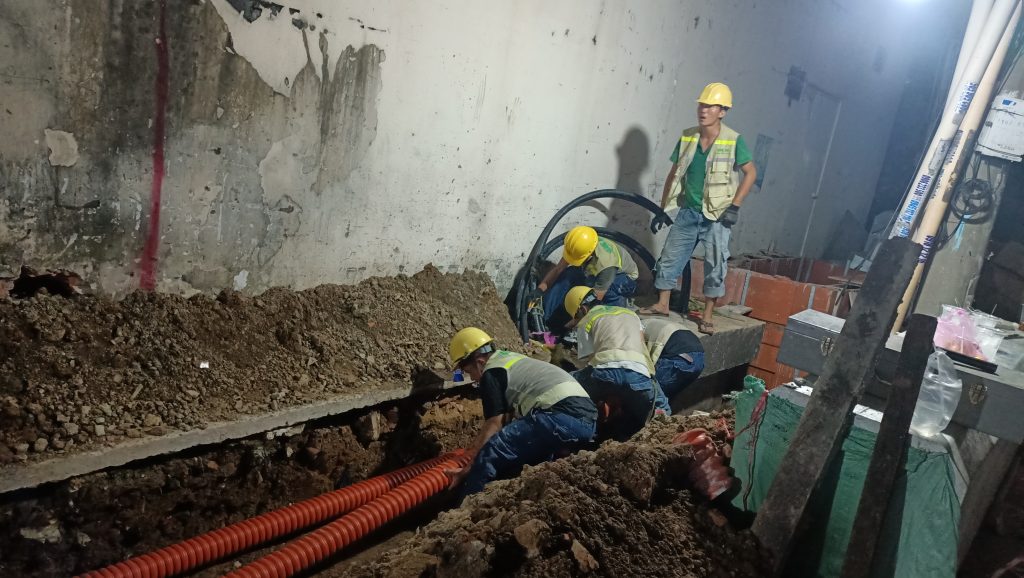News
Factory Electrical Equipment Cleaning: Optimal Process and Benefits
Factory electrical equipment cleaning is a crucial task to ensure safety, enhance operational efficiency, prolong equipment lifespan, and prevent electrical outages or explosions. This process includes safety preparation, the use of appropriate tools and chemicals, scientific cleansing, and post-cleaning inspection.
Safety Preparation and Equipment Isolation
Ensure that electrical equipment is disconnected or completely isolated from the power source, verify that it is not operational or that no indicator lights are on. Wear full personal protective equipment such as electrical insulating gloves and safety goggles to protect against electric shocks and dust. Prepare specialized cleaning tools like lint-free cloths, anti-static cleaning solutions, composite dust brushes, or electronic dust handling kits. This not only ensures electrical equipment safety but also enhances the cleaning and maintenance efficiency.
In an industrial environment, safety preparation and equipment isolation play critical roles in protecting both the labor force and the equipment system. This process helps ensure that the equipment is fully isolated from energy sources before maintenance or repair work.
-
Evaluation and Inspection of Equipment Before Operation: Inspecting equipment is crucial to early detection of defects or potential hazards. This is a step to ensure that equipment complies with current technical standards such as IEC, TCVN, NEC.
-
Isolate Electrical Equipment from Energy Sources: Before intervening on the equipment, disconnect it completely from the electrical supply or other energy sources such as steam, compressed air, hydraulics. Safe grounding must be practiced to avoid unforeseen accidents, typically using the Lockout/Tagout method.
-
Use Work Permits and Safety Procedures: For high-risk work, technicians should follow supervised procedures and use necessary permits, ensuring at least two independent individuals when carrying out tasks.
-
Equip Personal Protective Equipment (Personal Protective Equipment): Insulating gloves, boots, protective clothing, along with helmets and goggles are essential gear to ensure worker safety.
-
Lock and Attach Warning Signs: Any equipment under maintenance or repair must be locked and marked with warning signs. The warning messages must be clear, such as “Danger, do not operate” to prevent unauthorized use.
-
Equipment Safety Inspection: After maintenance completion, re-inspecting the equipment is critical. This process includes technical checks and trial operations to ensure equipment is safely functioning and meets technical standards.
-
Training and Educating Employees: To ensure the procedure is conducted safely and effectively, ongoing training should be provided to workers on how to identify risks and correctly use protective equipment.
The safety preparation and equipment isolation process not only prevents losses but also ensures the most efficient and safe operation of equipment in an industrial environment.
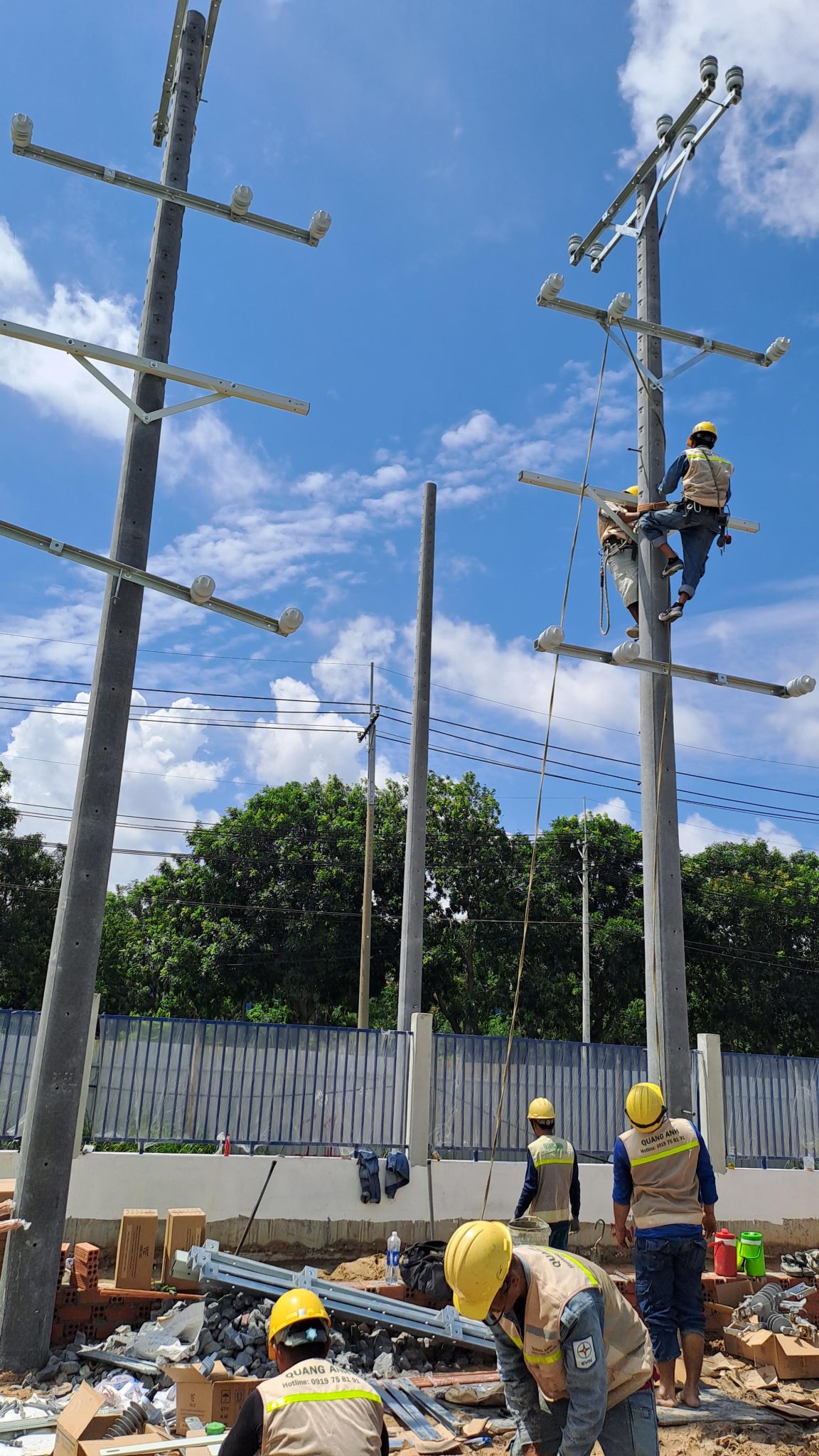
Process of Cleaning and Wiping Electrical Equipment
Proceed to wipe from top to bottom to avoid dust falling back on cleaned areas. Use dry cloth or specialized cleaning solutions, avoid using water or solvents that can cause corrosion or conduct electricity. Clean thoroughly in corners, narrow slots, contact points and dust-prone parts, controlled compressed air can be used to blow away ingrained dirt. This is an electrical equipment cleaning process in factories that demands meticulousness and precision to maintain functionality and equipment lifespan.
1. Safety Preparation Before Cleaning
- Isolate Electrical Equipment: Completely cut off power, ensure no voltage remains in the device. Confirm no indicator lights are on and there is no current before starting cleaning.
- Personal Protective Equipment (PPE): Wear anti-static gloves to avoid transferring oils or dust from hands to equipment and wear goggles as necessary, especially in industrial environments.
- Prepare cleaning tools: clean, lint-free cloths, anti-static cleaning solution or specialized electronics cleaning solutions, lint-free dry cloths.
2. Cleaning Materials and Chemicals
- Soft, Clean Cloths: Use soft, grit-free or lint-free cloths to avoid scratching device surfaces.
- Anti-static Cleaning Solutions: Use specialized solutions that don’t corrode electronic components, evaporate quickly without residue. Examples include NWK-99 that efficiently cleans dust, light oils, and oxidization, is eco-friendly, and reduces electrical box temperature when used.
- Simple Homemade Solutions: Warm water mixed with white vinegar (1:1 ratio) or lightly soapy water can also be used to wipe device exteriors, ensuring not to wet electronic components.
3. Electrical Equipment Cleaning Process
- Step 1: Prepare Clean Cloths and Solutions
Use clean cloths, wipe dry or lightly dampened with a suitable solution, avoid over-wetting cloths to prevent damage to electronic devices. - Step 2: Perform Wiping
- Gently wipe device surfaces with soft cloths to remove dust, grime, and other contaminants.
- For circuit boards, electronic components, use specialized cleaning spray to mist and blow clean dirt, grime without disassembling components.
- Step 3: Re-inspect Device
Ensure thorough cleaning, no remaining dirt, residues and device is dry before re-powering.
4. Important Precautions
- Do not clean when devices are live to avoid electric shock or short-circuit risks.
- Avoid using strong, flammable or component-corrosive solvents.
- For large machinery like washers, air conditioners, disassemble some parts for deeper internal cleaning, avoiding dirt and rust damage.
- Do not spray cleaning solutions directly on circuit boards; spray on cloths or use a sprayer at a safe distance to avoid liquid stagnation in devices.
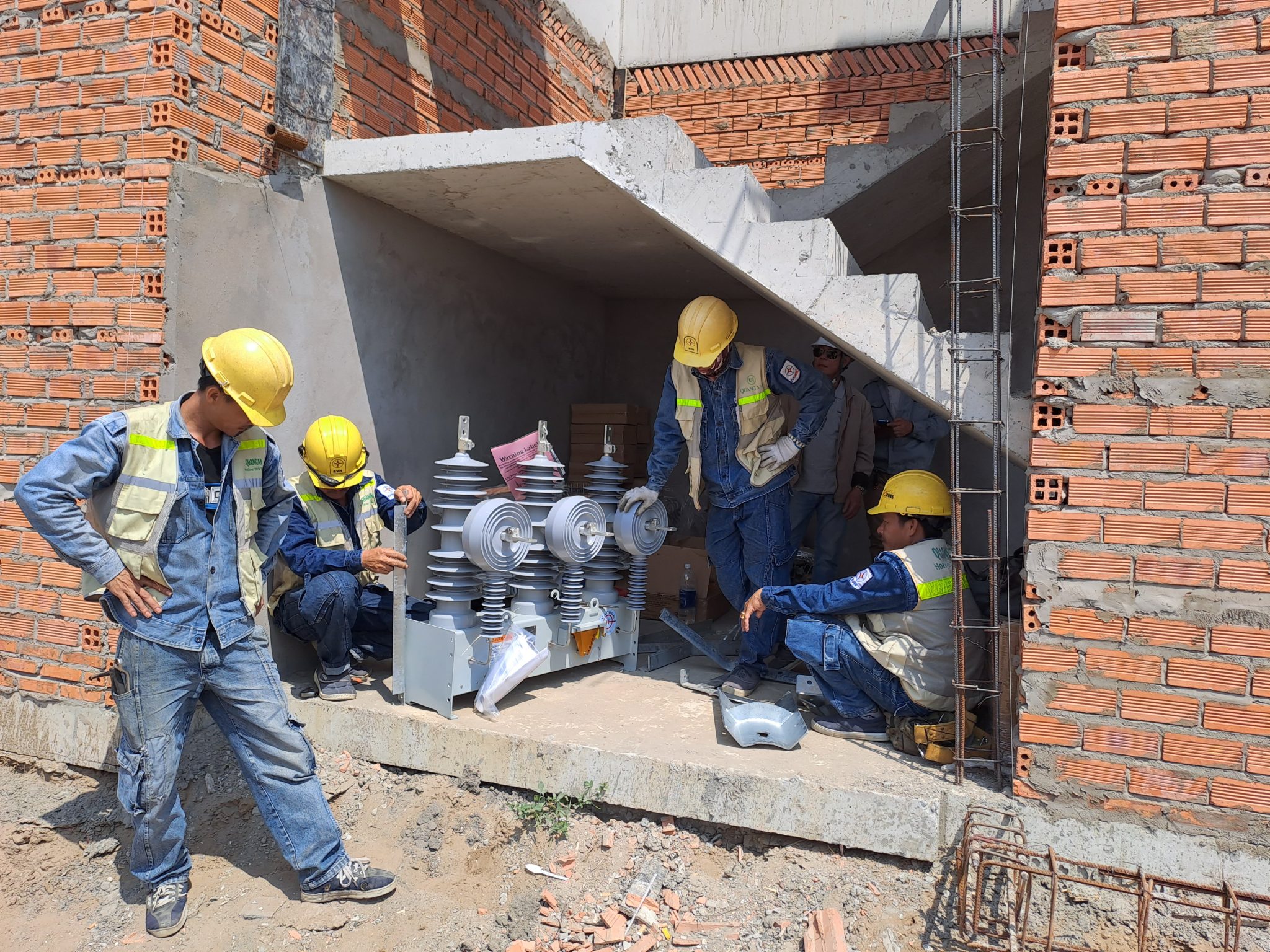
Post-Cleaning Inspection and Maintenance
Re-inspect entire equipment post-cleaning for damage or loose connections. Perform lubrication at bearings, rotating shafts if the electrical equipment has mechanical parts. Test equipment operation to ensure normal function before returning to use. Inspecting equipment after cleaning not only ensures safety but also maintains electrical equipment efficiency.
- Operational Inspection Post-Cleaning: First, conduct a post-cleaning inspection by restarting the equipment. This helps ensure no components are damaged or loose and detects anomalies such as unusual noise, abnormal vibration or electrical, water, or gas leaks, particularly in air conditioners.
- Inspect Components and Parts: Equally important is post-cleaning inspection of wear-prone parts like filters, RO membranes, rotating shafts, bearings, capacitors, and electric motors. Assess wear and tear, damage, and perform maintenance or replacement as needed. This ensures optimal component performance.
- Lubrication, Greasing: For mechanical parts like rotating shafts and gears, greasing is crucial. This is a key post-cleaning inspection step to reduce friction, wear, and extend machine life.
- Final Cleaning of Exterior Details and Gaps: Don’t forget to thoroughly inspect gaps and machine exteriors to eliminate dirt or residue, prepare for the final equipment cleaning. Ensure all surfaces are clean without dust residue.
- Water/Crystal Quality Check (for Water Filtration Systems): A special focus for RO water purifier machines is verifying post-membrane water purity and achieving optimal waste, filtered water performance standards.
- Maintenance/Inspection Record Keeping: Document detailed post-cleaning inspection processes, noting detected issues and resolutions. These records provide valuable information for future maintenance.
- Maintenance and Usage Guidance Post-Cleaning: Finally, technicians should provide users with specific maintenance and preservation instructions for keeping devices in optimal condition post-cleaning.
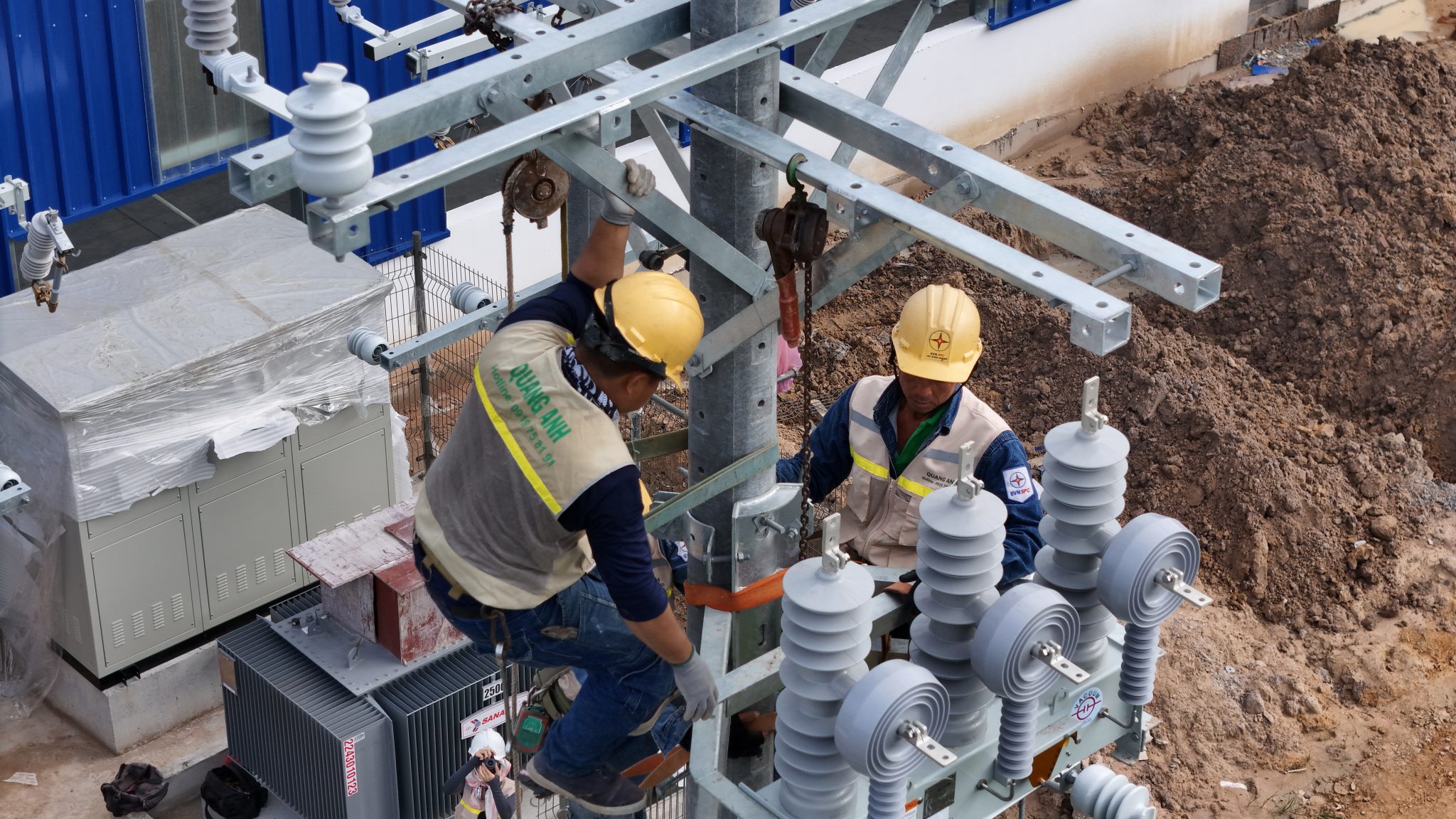
Overall Factory Area Cleaning
Cleaning roofs, workshop ceilings, ventilation fans, lighting, walls, and floors creates a clean environment, reduces dust accumulation on equipment. Use specialized chemicals suitable for surface cleaning and removing long-standing stains on equipment and nearby areas. Maintaining cleanliness not only extends electrical equipment lifespan but also improves overall factory working conditions.
Overall factory cleaning is an essential process to meet industrial cleaning standards and safe working environments. For effective industrial cleaning, businesses should adhere to the following steps:
- Create an Overall Plan and Survey the Area: Firstly, a comprehensive factory survey will identify areas needing cleaning, degree of dirtiness, and clearly assign tasks to cleaning staff, ensuring a systemized approach.
- Prepare Tools, Equipment, and Specialized Chemicals: Equip with industrial vacuum cleaners, floor scrubbers, and suitable cleaning chemicals for different surfaces to efficiently tackle stubborn grease and chemical residues.
- Cleaning Process by Specific Area:
- Ceiling Cleaning: Handle dirt, cobwebs, and residues on ceiling and hanging equipment.
- Wall and Door Cleaning: Use factory cleaning equipment to thoroughly wipe all wall and door surfaces.
- Floor Cleaning: Floor scrubbers combined with cleaning chemicals will remove stubborn stains and grease.
- Machinery and Tool Cleaning: Ensure equipment is dust-free, maintaining optimal operability.
- Auxiliary Area Cleaning: Areas like bathrooms, rest areas must also be cleaned daily to ensure safety and hygiene.
- Regular and Post-Production Cleaning:
- Daily: Consistently implement production area cleaning measures.
- Periodic: Comprehensive cleaning of less-used areas and thorough equipment checks.
- Post-Production: Thorough cleaning to protect the production environment.
- Sanitation Quality Check and Handover: Post-completion, carefully inspect each area to ensure sanitation standards are maintained and prepare for handover.
- Key Precautions in Overall Factory Cleaning: To ensure worker safety, appropriate signage must be placed, incident reports submitted timely, and cleaning tool retrieval is performed carefully.
The entire process must be strictly followed to protect worker health, maintain production standards and enhance operational efficiency.
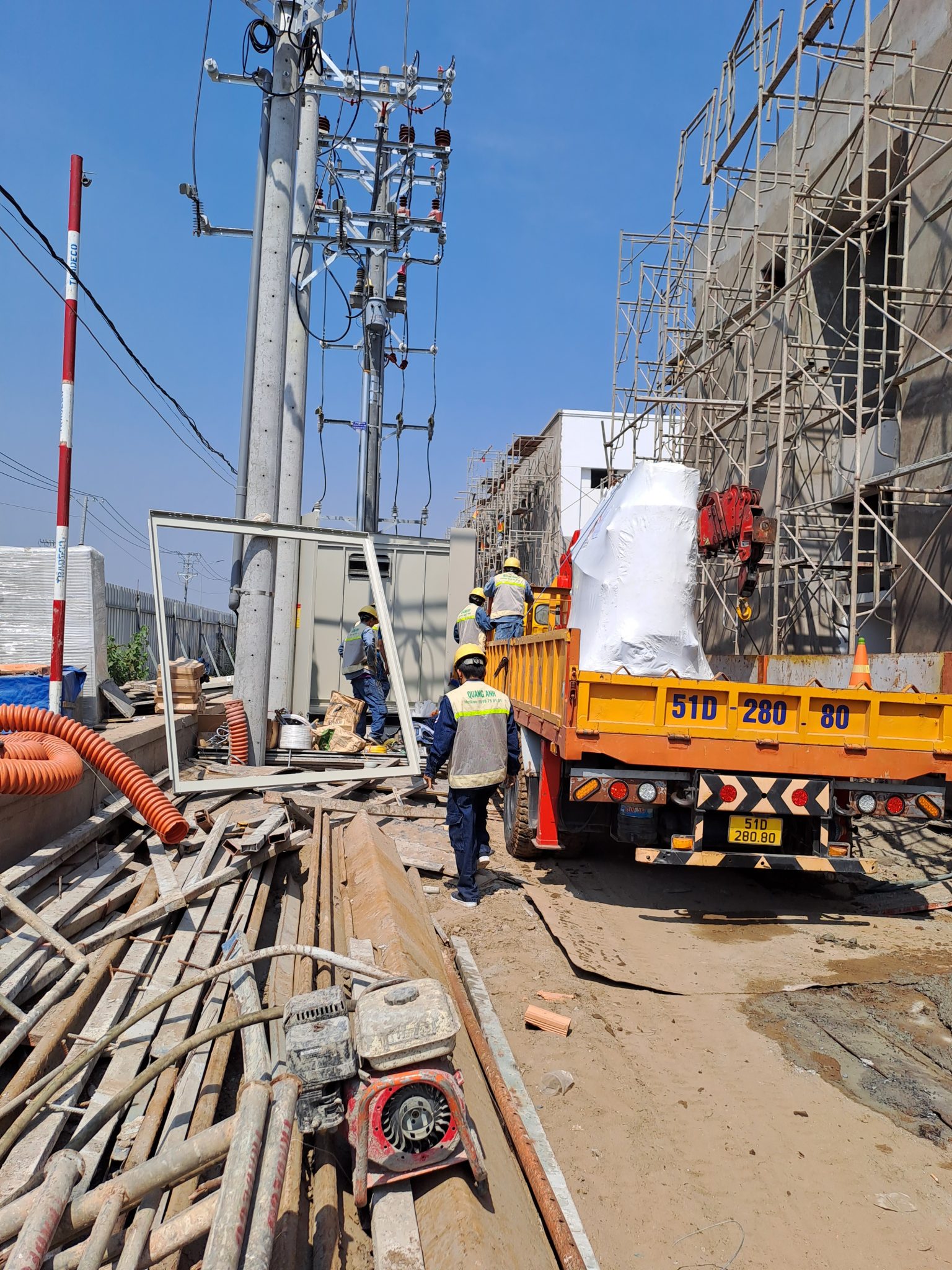
Factory electrical equipment cleaning offers many technical benefits, including enhanced operational efficiency, prolonged equipment lifespan, and prevention of electrical issues. Investing in electrical equipment cleaning and routine inspection not only optimizes operational efficiency but is also an essential maintenance strategy ensuring the entire plant’s safety.
If you require additional support or wish to optimize the factory electrical equipment cleaning process, please contact QuangAnhcons via hotline: +84 9 1975 8191 for detailed consultation.
QuangAnhcons provides electrical equipment cleaning and maintenance services for factories with experienced technicians, ensuring safety and optimal efficiency in each process. We are committed to delivering comprehensive solutions tailored to each customer’s technical and safety requirements.

 Tiếng Việt
Tiếng Việt 简体中文
简体中文 Deutsch
Deutsch 日本語
日本語 한국어
한국어 ไทย
ไทย Русский
Русский Français
Français
